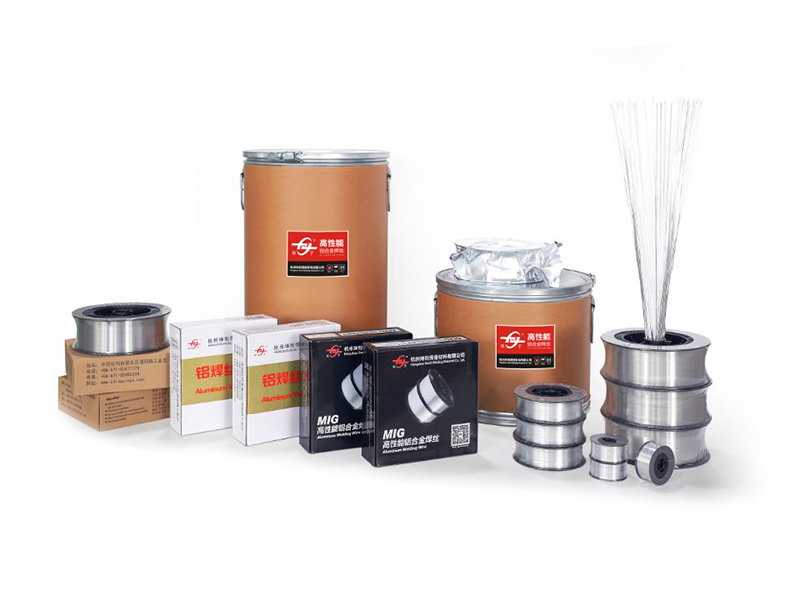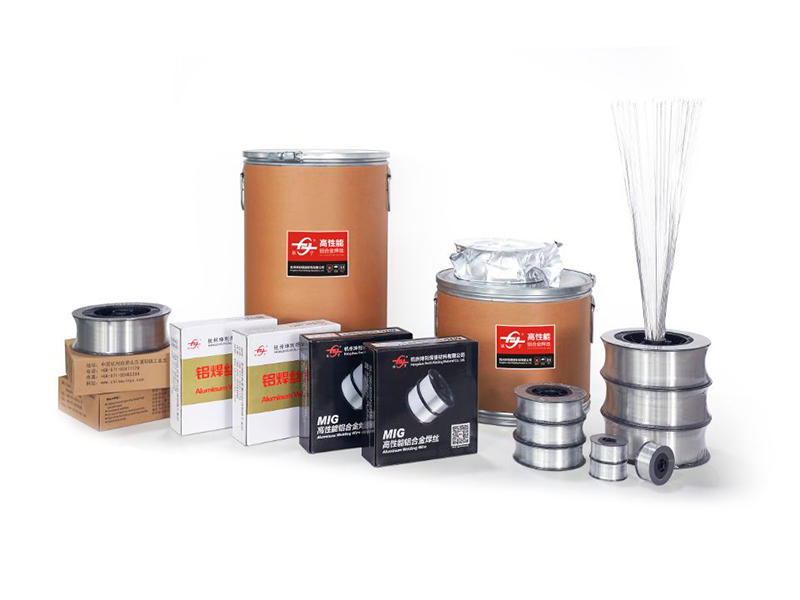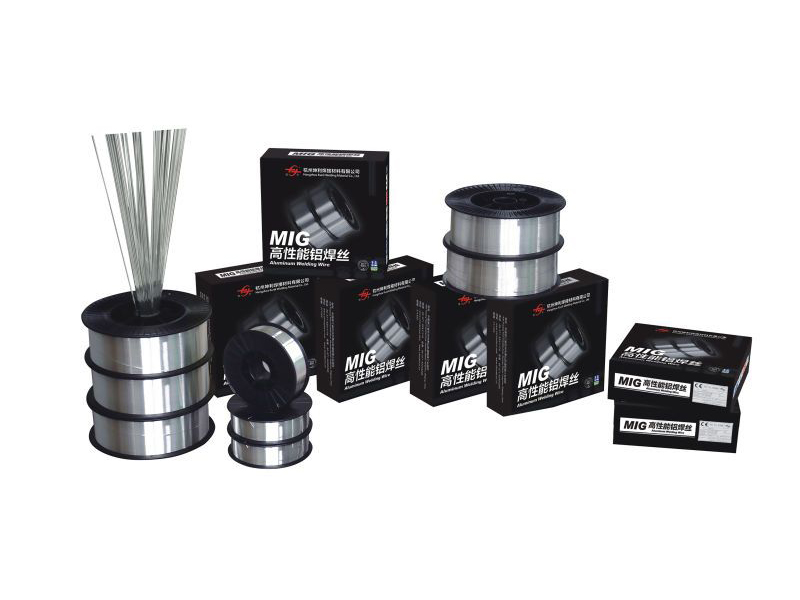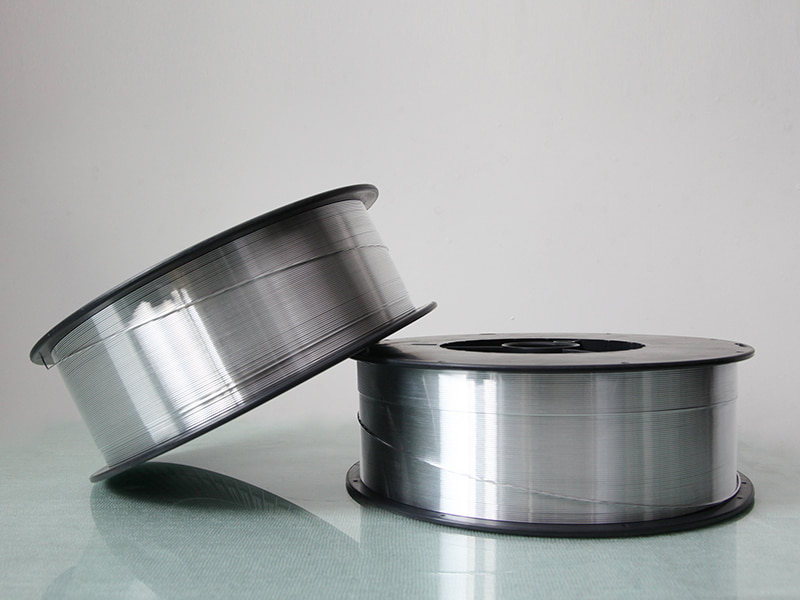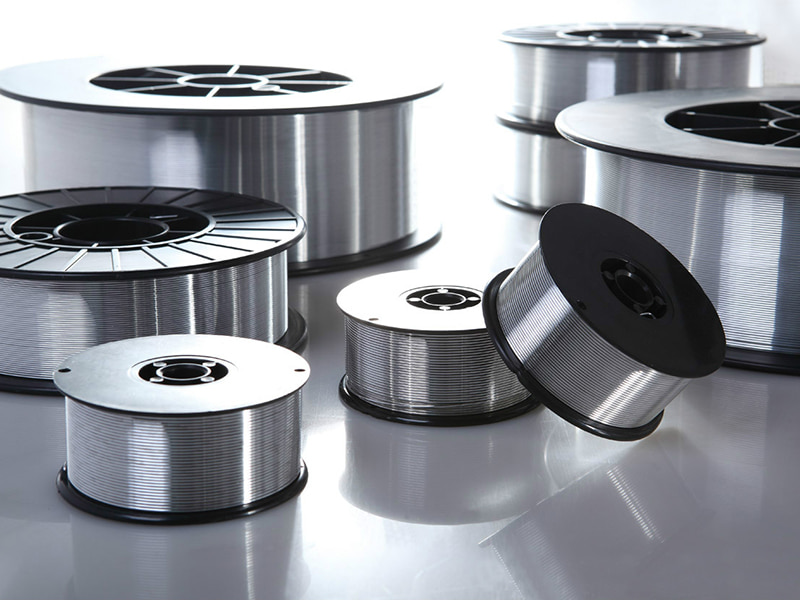Aluminum Welding Wire
ER4047 Aluminum Mig Welding Wire
4047 is a 12% Silicon Aluminum filler metal which has excellent corrosion resistance and low melting point ensuring a very low number of deformations in the parent metal, recommended for welding alloys as 1060, 1350, 3003, 3004, 5052, 6060,6061,6063,etc. and casting Al alloys, such as 710.0,711.0.
ER4047 Aluminum Mig Welding Wire - Precision Aluminum Joining for Automotive and Structural Applications
Product Features
- Composition Stability: Contains approximately 12% silicon, designed to minimize weld cracking and reduce thermal distortion during aluminum MIG welding.
- Arc Performance: Provides consistent arc stability and smooth metal transfer, facilitating controlled bead formation in various aluminum alloys.
- Corrosion Resistance: Suitable for applications requiring resistance to atmospheric and chemical corrosion due to its alloy composition.
Product Description
The ER4047 Aluminum MIG Welding Wire is engineered for joining aluminum components where reduced thermal expansion and crack resistance are critical. Its silicon-enriched composition enables welding of aluminum alloys such as 4xxx and 6xxx series with controlled fluidity and minimal porosity.
Manufactured under ISO 9001-certified processes, this welding wire conforms to AWS A5.10/A5.10M standards. The consistent chemical composition and mechanical properties ensure reliable performance in automotive body panels, heat exchangers, and structural frameworks.
Technical Specifications
| Specification | Value |
| Alloy Type | ER4047 |
| Diameter | 0.8mm, 1.0mm, 1.2mm |
| Silicon Content | 11.0-13.0% |
| Tensile Strength | 150-180 MPa |
| Elongation | 8-12% |
| Welding Position | Flat, Horizontal, Vertical |
| Recommended Shielding Gas | 100% Argon |
| Compliance Standard | AWS A5.10/A5.10M |
Applications
This product is suitable for the following industrial scenarios:
- Automotive body panel welding requiring dimensional stability.
- Heat exchanger and radiator fabrication.
- Structural aluminum assembly in architectural or transportation sectors.
FAQ
1. Can ER4047 wire be used for welding 6xxx series aluminum alloys?
Yes, ER4047 is compatible with 6xxx series aluminum for MIG welding, particularly where reduced thermal expansion and crack resistance are needed. Preheating may be required for thicker sections to prevent porosity.
2. What shielding gas is recommended for ER4047 MIG welding?
100% Argon is recommended to ensure stable arc performance and optimal weld bead formation. Mixed gases are generally not necessary for standard ER4047 applications.
3. What is the typical application thickness range for ER4047 welding wire?
ER4047 is effective for aluminum sheet and plate thicknesses from 1 mm up to 6 mm. For thicker sections, controlled heat input and multiple passes are advised to minimize distortion and maintain weld integrity.
ER4047 Aluminum Mig Welding Wire
Coming From China,
Marketing To The World.
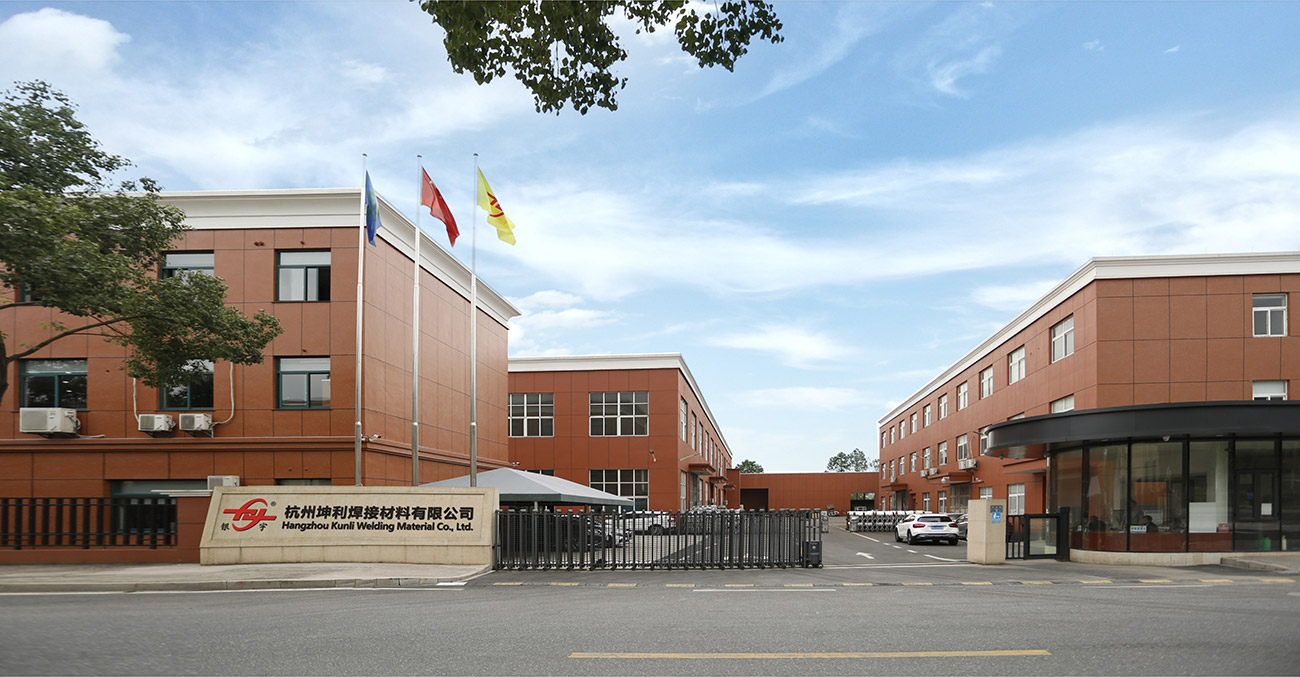
-

30+
USED IN HEAVY INDUSTRY TECHNOLOGY SECTOR
-

35
YEARS OF RESEARCH AND DEVELOPMENT EXPERIENCE
-

200+
COOPERATIVE LARGE-SCALE R & D INSTITUTIONS
-

20+
GLOBAL TRADE COUNTRIES AND REGIONS
Coming From China,
Marketing To The World.
More than 90% of our field operators have professional and technical education background, and have many years of experience in equipment processing and assembly. It is precisely because of this united, dedicated, pioneering, skilled and experienced team that the company's technology and products can be continuously updated and improved.
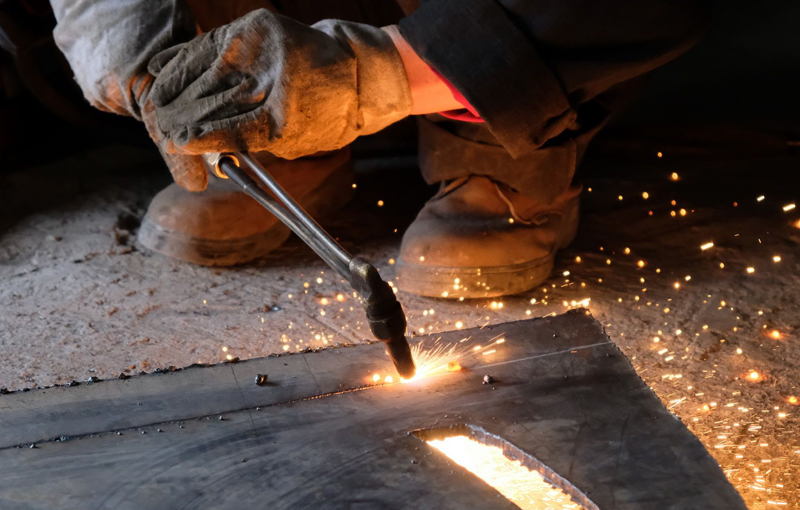
Send Us a Message?
Related Products
-
 View More
View More
5154 Aluminum Alloy Welding Wire
-
 View More
View More
ER4043 Silicon Aluminum Welding Wire
-
 View More
View More
ER4047 Aluminum Mig Welding Wire
-
 View More
View More
ER5154 Al-Mg Alloy Wire
-
 View More
View More
ER5087 Magnesium Aluminum Welding Wire
-
 View More
View More
Aluminum Welding Wire ER5183
-
 View More
View More
ER5356 Aluminum Welding Wire
-
 View More
View More
ER5554 Aluminum Welding Wire
-
 View More
View More
ER5556 Aluminum Welding Wire
-
 View More
View More
ER1100 Aluminum Welding Wire
-
 View More
View More
ER5754 Aluminum Welding Wire
-
 View More
View More
ER2319 Aluminum Welding Wire
::: Last News :::
-
Can Aluminum Braided Wire Meet Your Design Needs?
Dec 08, 2025
Aluminum Braided Wire has transformed from a niche alternative into a common and standard component in modern electrical...
-
Industry Use of Aluminum ER5087 Welding Wire
Dec 05, 2025
For manufacturers who need to balance strength, ductility, and corrosion resistance in common structural and marine appl...
-
Quick Decision Guide For Wire Selection
Dec 03, 2025
On modern shop floors, small choices about wire form and feeder setup shape production rhythm, quality, and finishing ti...
-
How Suppliers Ensure Aluminum Wire Compatibility
Dec 01, 2025
Aluminum alloy welding is a complex process requiring precise operation at every stage. Selecting the appropriate weldin...
Industry Information Extension
More Information About ER4047 Aluminum Mig Welding Wire Suppliers
How to optimize MIG welding parameters for ER4047 wire? A guide to current, gas and speed
ER4047 (aluminum-silicon alloy, containing 12% silicon) is widely used in thin plate welding, automotive parts and refrigeration industries due to its excellent fluidity, crack resistance and heat resistance. However, aluminum welding is parameter-sensitive and requires balancing key factors such as current, gas and wire feed speed. The following is a practical guide to optimizing MIG welding parameters:
1. Shielding gas selection
Recommended gas: pure argon (Argon 100%).
Argon can stabilize the arc and reduce oxidation, making it suitable for aluminum welding;
Avoid using mixed gases containing helium (He) (such as Ar/He) unless higher penetration is required (but ER4047 is mostly used for thin plates and usually does not require additional penetration).
Gas flow: 15–25 CFH (7–12 L/min), ensuring coverage of the welding area and avoiding pores.
2. Current and voltage settings
Polarity: DC reverse connection (DCEP), ensuring cathode cleaning and breaking the oxide film on the aluminum surface.
Parameter reference (according to plate thickness):
| Thickness (mm) | Current (A) | Voltage (V) | Wire Feed Speed (m/min) |
|---|---|---|---|
| 0.8–1.6 | 70–100 | 16–18 | 4–6 |
| 1.6–3.2 | 100–150 | 18–20 | 6–8 |
| 3.2–6.0 | 150–220 | 20–24 | 8–12 |
Thin plate skills: reduce current (avoid burn-through) and increase welding speed;
Thick plate skills: appropriate preheating (100–150°C) to reduce thermal stress.
3. Wire feeding speed and welding gun angle
Wire feeding speed: needs to match the current. Too fast will easily cause spatter, and too slow will cause poor fusion;
Recommended starting value: 6 m/min, fine-tuned according to weld formation.
Welding gun angle: push welding method (10°–15° tilt) to improve gas shielding effect.
4. Welding speed and heat input control
Thin plate (<3mm): high-speed welding (30–50 cm/min) to reduce heat accumulation;
Thick plate: appropriately reduce speed (20–30 cm/min) to ensure penetration.
Key point: maintain uniform speed and avoid pauses (aluminum conducts heat quickly and is prone to forming concave or nodular welds).
5. Common problems and solutions
Porosity: Check gas purity (≥99.99%), clean the base material (remove oil/oxide film);
Unfused: Increase current or reduce welding speed;
Cracks: Control interlayer temperature (≤150°C) to avoid silicon segregation.
 English
English Deutsch
Deutsch
 English
English Deutsch
Deutsch
